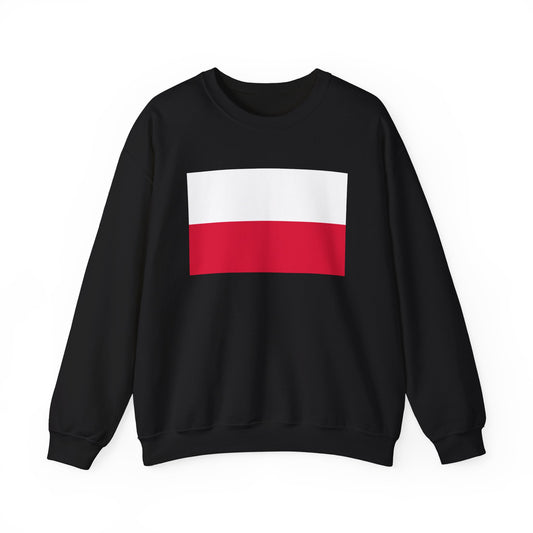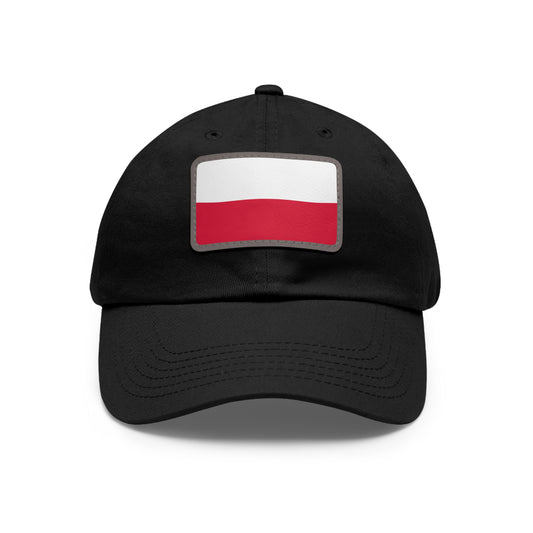-
Poland Hoodies
Regular price $34.40 USDRegular priceUnit price / per -
Poland Flag Sweatshirt
Regular price $34.15 USDRegular priceUnit price / per -
Poland Sweatshirt
Regular price $34.15 USDRegular priceUnit price / per -
Poland Leather Patch Hat
Regular price $18.85 USDRegular priceUnit price / per -
Poland T-shirts
Regular price $22.79 USDRegular priceUnit price / per -
Poland Flag Hoodies
Regular price $34.40 USDRegular priceUnit price / per -
Poland Flag on T-shirt
Regular price $22.79 USDRegular priceUnit price / per
Collection: Poland
The Polish flag is a symbol of pride and history for the Polish people. Its simple yet striking design has stood the test of time, representing the nation's resilience and strength. We will delve into the intriguing facts surrounding the Poland flag, from its design and historical context to its symbolism and current relevance.

Overview of the Poland Flag's Design and Colors
The flag of Poland showcases a striking yet uncomplicated design comprised of two equal-sized horizontal bands: white on top and red on the bottom. These two colors are not randomly chosen; they are deeply entrenched in the nation's identity and history, dating back to medieval times. This design's simplicity ensures its distinctiveness and easy recognition on the international stage. The white band represents peace and purity, while the red band signifies the courage and bravery of the Polish people. This color scheme, intrinsic to the Polish heritage, has remained consistent through the centuries, signifying Poland's endurance and unchanging spirit amidst its complex history. The flag's design, devoid of complex symbols or emblems, speaks to the nation's resilience and straightforward approach to its identity and values.
Historical Context: The Evolution of the Poland Flag
The evolution of the Poland flag is deeply intertwined with the nation's rich history, marked by periods of independence, partitions, and occupations. The genesis of the flag's colors dates back to the Kingdom of Poland in the 13th century, making them among the most enduring symbols of Polish heritage. These colors were officially consolidated into the flag we recognize today in 1919, a pivotal year when Poland regained its independence after the turmoil of World War I. This era heralded a new beginning for the Polish state, and adopting the flag symbolized a reclamation of its sovereignty and identity.
While the core elements of the flag—its colors and horizontal bisection—have remained constant throughout the centuries, its significance and context of use have evolved. The flag has borne witness to Poland's shifting borders, political upheavals, and the indomitable spirit of its people. During the Second World War and the subsequent Soviet influence, the flag became a potent symbol of resistance and hope for a free Poland.
In each chapter of Poland's history, the flag has served as a national emblem and a beacon of the Polish people's aspirations, struggles, and resilience. Its enduring presence reflects a continuity of national identity, even in changing political landscapes and challenges.
Symbolism: The Deeper Meaning Behind the Poland Flag

The two colors of the Poland flag, white and red, are steeped in rich symbolism that reflects the country's core values and historical journey. White signifies peace and purity, embodying the nation's harmony and moral integrity aspirations. It echoes the enduring hope of the Polish people for a peaceful future, free from conflict and strife. The red, on the other hand, symbolizes the courage and bravery that have been hallmarks of Poland's history. It commemorates the sacrifices made by countless individuals in the pursuit of freedom and sovereignty.
The red band is a powerful reminder of the bloodshed in battles fought for Poland's liberty and independence. Together, these colors represent the physical landscape of Poland and encapsulate the essence of the Polish spirit—resilient, courageous, and striving for purity in ideals and actions. This symbolic interplay between white and red transcends the mere representation of the nation, embodying the collective memory and ongoing narrative of the Polish people.
Current Relevance: The Poland Flag in Today's Context
Today, the Poland flag plays a vital role in the fabric of national life, serving as an emblem of solidarity and identity during significant events. It adorns streets, buildings, and homes during important national holidays, such as Constitution Day on May 3 and Independence Day on November 11, symbolizing the Polish people's collective memory and ongoing narrative. In military contexts, the flag is honored in ceremonies and commemorations, reflecting the deep respect for the armed forces and the sacrifices made for the nation's freedom.
Beyond formal occasions, the Polish flag has found a place in modern expressions of patriotism, visible in sporting events where fans proudly display it supporting their national teams. This wide-ranging presence underscores its relevance as a symbol of national unity and pride across different spheres of Polish life.
However, the flag's significance extends into the realm of political expression. It has become common at various demonstrations and protests, symbolizing the people's call for justice, liberty, and respect for human rights. This dual role of the Poland flag as a symbol of state and a banner for grassroots activism highlights its complex place in Poland's contemporary society. It represents the country's rich historical legacy and the dynamic and ongoing struggle for a better future.
Additional Facts: Protocols and Anecdotes Related to the Poland Flag
Respecting the traditions and protocols of the Polish flag is taken very seriously. The flag must be displayed to honor its significance, ensuring it never comes into contact with the ground as a sign of respect. Raising and lowering the flag is performed with a sense of ceremony, reflecting the deep reverence for this national symbol. Additionally, on occasions of national sorrow, the Poland flag is flown at half-mast, serving as a poignant reminder of the collective mourning or remembrance.
A lesser-known yet fascinating aspect of the flag is its incorporation into personal celebrations and milestones, symbolizing national pride and joy. Unique to Poland is the custom of incorporating the flag into the décor and festivities of significant personal events, underscoring the flag's integral role in the lives of the Polish people beyond formal state occasions. This blend of official protocol and personal inclusion highlights the flag's multifaceted importance in Polish culture and tradition.














